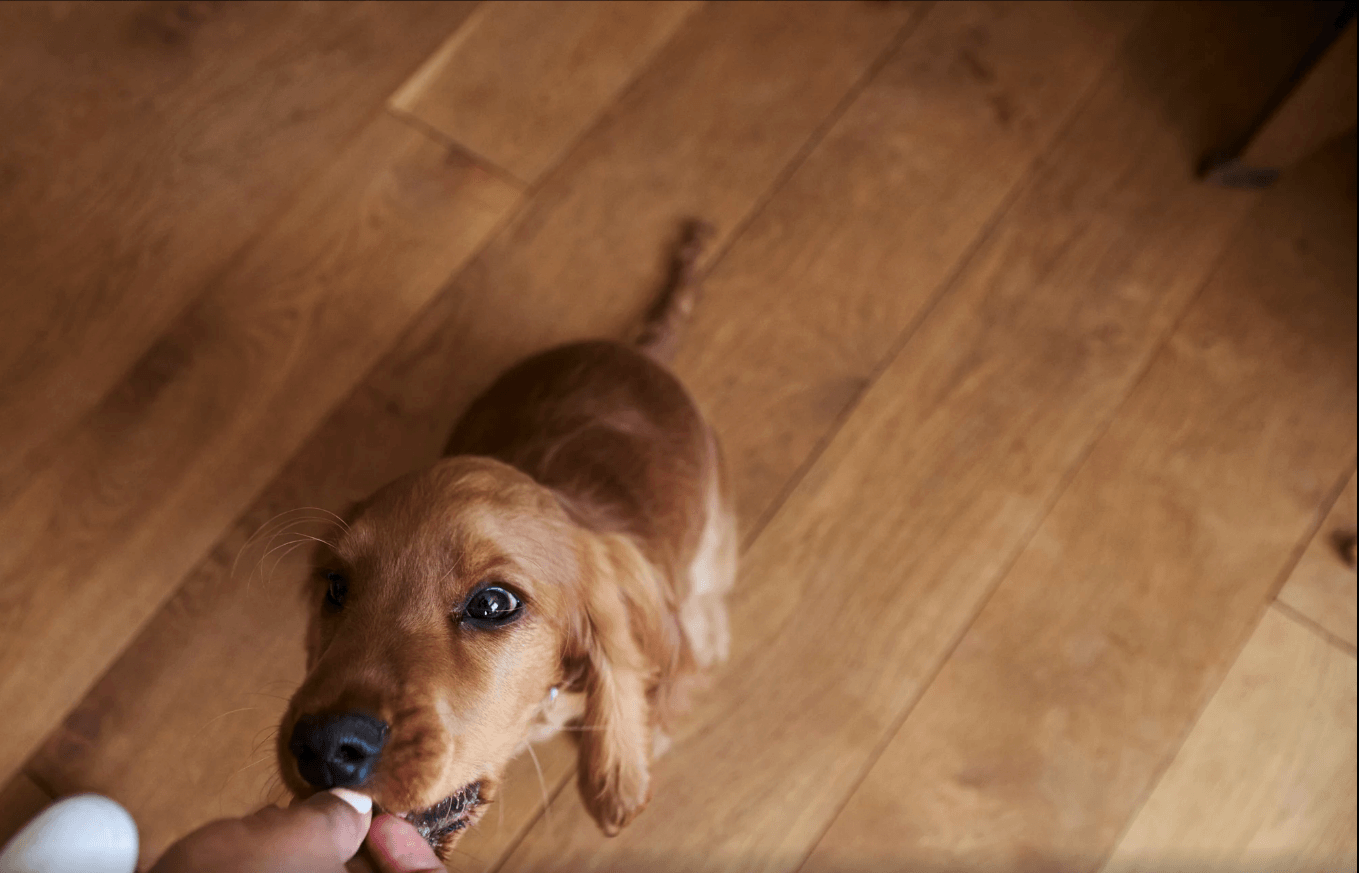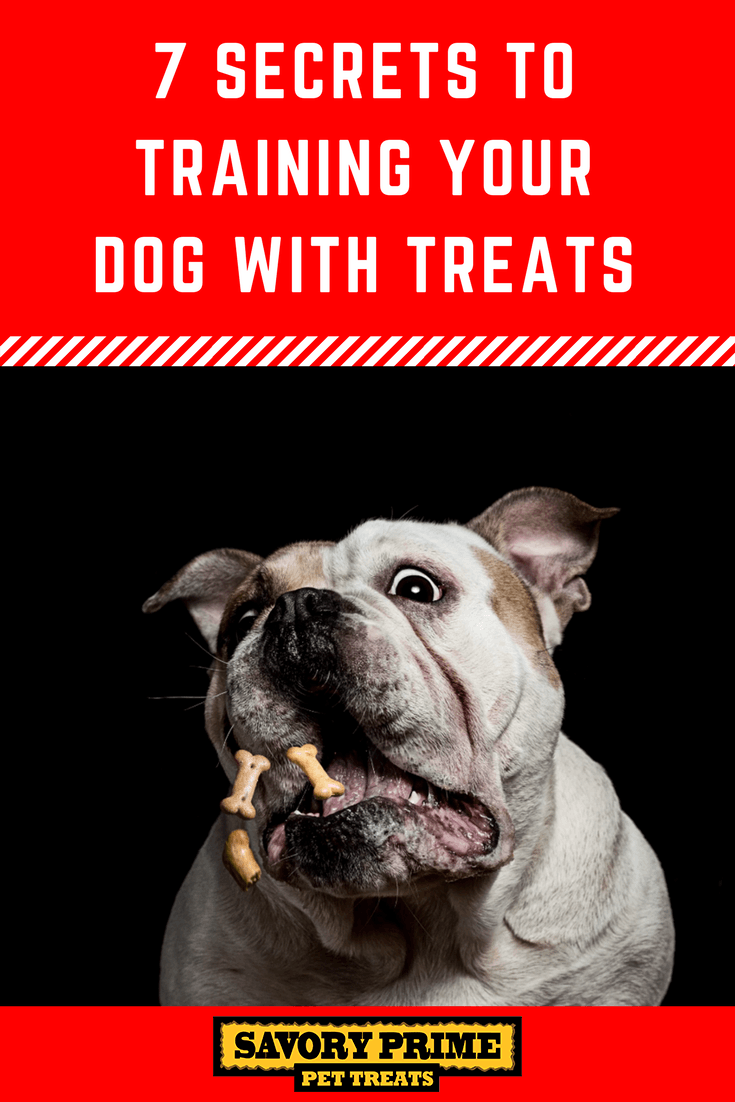The use of treats in dog training is by far one of the most effective positive reinforcement methods. But knowing how to use dog training treats is more important than knowing that they work. That’s right, there is a right way to training your dog with treats, and of course, a wrong way.
Gentle training methods recommend the use of positive reinforcement, and appealing to food-oriented dogs with treats is one way. In training your dog with treats, what are the dos and don’ts that you need to know to do it the right way?
Secrets to Effectively Training Your Dog With Treats
1. Reinforce, Don’t Bribe
Perhaps the most important thing that you need to know in obedience training is that reinforcement works better than bribery. Your dog shouldn’t do the desired action for the treat. Instead, the treat should act as a reward for doing a job well done.
As you won’t always have a treat handy, your dog’s obedience shouldn’t rely on the presence of the treat either. The beginning of training is a great time to use treats, but as it progresses you should rely on them less and less. This ensures that your dog is doing the action because of the command and not because you’ll only give them the treat if they do it.
To strengthen the link between the command and the desired action, a treat works as a reinforcement. Upon establishment of the link, you can start using treats less often.
2. Reward Small Steps
No matter how tasty your treats may be, your dog won’t learn a command in one go. That’s why you shouldn’t expect to reward them with a treat for completing the action on your first command. Instead, reward small steps. After all, learning can take a while.
Reward even the smallest of progress, even accidental ones, as long as they lead your dog to the end goal. When you reward these actions with food, your dog will make the connection and will continue to do them.
3. Keep Treats Small
You don’t want the treats to make your dog too full, as they’ll stop responding to food reinforcement if they’re already full. Using treats more frequently at the beginning of training means that you’ll have to use quite a lot in one session, so keep the amount manageable.
Get small bits of treats to give to your dog. As long as the flavor appeals to them, a small taste will be enough to keep your dog motivated. Upgrade their treats to something tastier or more appealing if your dog does not seem motivated enough by your treats.
The easier it is for your dog to eat, the faster you can continue with training. Use soft or chewy treats to ensure a quick reward for your canine friend.
4. Adjust Diet
Adjust your dog’s meals with the consideration of their new treats. You can avoid obesity by not overfeeding your dog. While giving in smaller amounts than a usual meal, dog treats are still food that can add to your dog’s weight.
If you’ve given your dog a treat during training time, reduce the amount that you give them during meal times accordingly. Your dog may be effectively learning a handy new command but at the price of their health.
5. Phase It Out
Once your dog does the right behavior 90% of the time, you can start phasing out the treats. At the end of it all, you’ll want your dog to perform the action even without a treat. This is the best time to start using the treats less.
You can do this by only rewarding outstanding performance like the quickest response time, length of time remaining in position (for commands like “Sit” or “Stay”), or a long streak of doing the behavior properly. On the plus side, you can continue with other positive reinforcement methods like physical affection and verbal praise.
6. Time It Right
One of the trickiest parts of using rewards in dog training is giving them at the right time. After all, this will determine which behavior your dog associates with the reward. Before you reach the part where you can phase out your treats, you’ll have to first give timely rewards to get your dog to that level of training.
Positive reinforcement training relies on rewarding correct behaviors immediately. As a trainer, you’ll have to improve your own response time to your dog doing the right action. The quicker you give the treat for proper behavior, the quicker your dog will learn to associate the command with the action.
A clicker can be helpful in giving your dog a signal of what the right behavior is. In case your training makes it impossible for you to reward immediately, use a clicker right when your dog is doing the behavior then reward with a treat as soon as possible.
7. Experiment
There are quite a variety of dog treats on the market, so I don’t blame you if you’re having trouble choosing the one for your dog. Not to mention that homemade treats are also an option. My advice to you regarding this is that you shouldn’t be afraid to experiment.
Even if you find one kind of treat that works for your dog, don’t go buying in bulk just yet. It’s good to change your rewards every once in a while, so long as it remains appealing to your dog. You’ll need upgrades to keep your dog interested and motivated.
Experiment while it’s still early. Determine the flavors that appeal the most to your dog, and if they have a taste for commercial, homemade, or both. If your dog’s interest runs out, you wouldn’t want to have to look for a new flavor to keep them interested.
Conclusion
Now that you know how to use dog training treats the right way, you can ensure that your training will be more effective. One last tip before you start training, while a lot of dogs will respond to food as a positive reinforcement, there are also those which prefer different reward systems like toys, affection, or simple verbal praise. Get to know your dog and what makes them tick to train them more effectively.
Recent Pet Posts
Blog Categories
Product categories
- Accessories (9)
- Chicken & Veggie Wraps (8)
- Grillers Jerky Tenders (4)
- Jerky Treats (10)
- Made in the USA (9)
- Non-Rawhide Treats (28)
- Beggar Bone (11)
- Bully Sticks (4)
- Butcher Bone (4)
- Cod Skin Fish Treats (3)
- Pork Skin Twists (2)
- Pressed Rawhide Bones & Rolls (16)
- Bones & Rolls (6)
- Pressed Rawhide Bulk (6)
- Twist Sticks (4)
- Savory Munchies (13)
- Supreme Bones & Rolls (48)
- American Rawhide Bulk (16)
- Rawhide Bones (14)
- Rawhide Chips (6)
- Rawhide Rolls & Sticks (12)
- Uncategorized (8)




